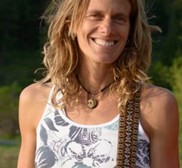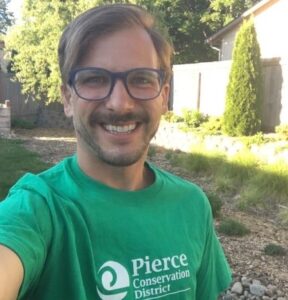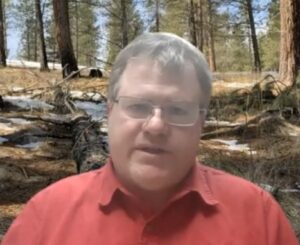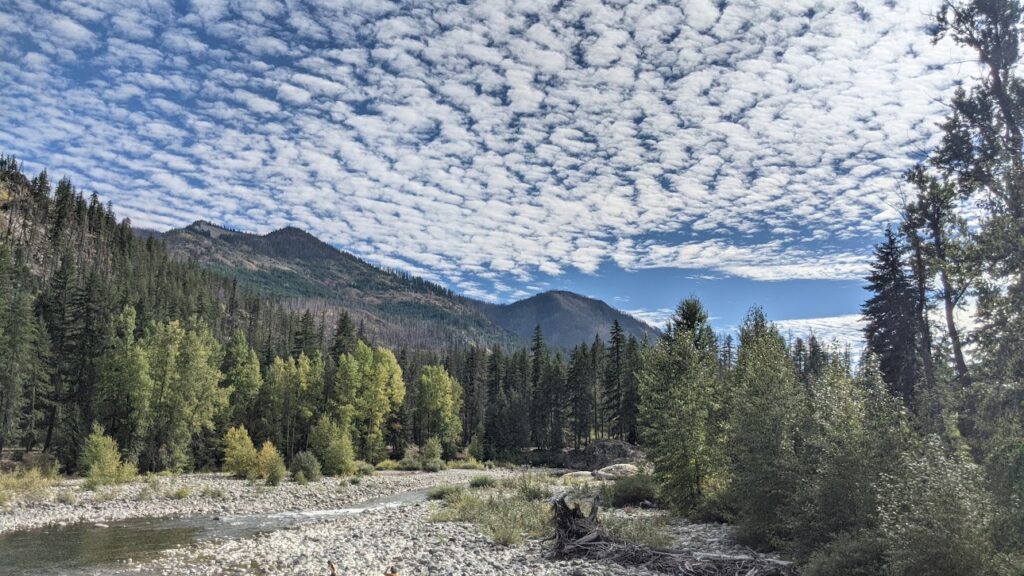Engineering design can be a daunting topic to teach and having the right tools makes all the difference. In January, 58 educators from 35 schools and districts attended PEI’s 2-day FieldDesign: Engineering Design for Field-Based Applications workshop, and came away with a framework, resources, and connections to local conservation organizations to support students at any grade level in hands-on learning.
During the first session, PEI’s Central Washington and East Sound-North FieldSTEM Coordinators Megan Rivard and Tressa Arbow introduced the

framework and developed implementation plans. In the second regional sessions, participants continued to learn the steps in engineering design and hear from locally-based guest presenters sharing real-world examples of how they use FieldDesign processes in their daily work.
Eastern Washington teachers heard from Kat Hall, Restoration Program Director at The Lands Council. She explained the organization’s efforts to restore degraded creeks by installing Beaver Dam Analogs (BDAs), manmade structures that mimic natural beaver dams by providing aquifer storage, filtering water, and creating wetlands and wildlife habitat. Her presentation focused on the Thompson Creek watershed, which has become polluted with phosphorus.
The Lands Council has an extensive environmental education program, and Hall appreciated the opportunity to connect with teachers. “It’s so important to let them know that outdoor education is not as intimidating as you might think,” she says. “It’s exciting for me to share about BDAs, and some practical ways you can modify lessons based on the age of your kids. I work with teachers, and I made the point that it just takes a simple phone call to get a hold of me.”

Coastal, West Sound and South Sound teachers learned about the ecological restoration work of the 10,000 Years Institute. Executive Director Jill Silver and Watershed Project Coordinator Raena Anderson explained how the stages of watershed restoration work within the FieldDesign framework, from concept and design through reporting and monitoring over time. The nonprofit hires youth as part of their crews and teaches them watershed science, monitoring practices and data collection.
Silver was impressed by the FieldDesign framework. “The entire concept is well thought out and useful in developing ecological literacy and skillsets to understand where you are in the landscape,” she says, “and to understand what kind of monitoring or data collection goes into best management practices. This program is great at getting educators to think more deeply about how to develop smaller projects that students can engage with.”
In the East Sound group, Pierce Conservation District’s Green Stormwater Program Manager Robb Krehbiel introduced the ‘Orcas Love Rain Gardens’ program for Tacoma Public Schools. The program teaches students how rain gardens mitigate toxic pollution which is endangering Orca pods in the Salish Sea.
“One of the key pieces to any successful rain garden project is having an engaged teacher,” says Krehbiel, “because teachers know their students’
schedule and they’re the experts on how to best engage them in rain garden design and care.” While Pierce Conservation District is already connected with local schools, he recommends any teacher interested in developing a rain garden project contact their local conservation district. “A lot of them, especially in western Washington, are doing more work on green stormwater infrastructure,” he says.
Central Washington teachers learned how foresters like Andy Perleberg of Washington State University Extension Forestry work with private landowners to engineer and propose healthy forest management solutions and ways they engage students in forestry.
engineer and propose healthy forest management solutions and ways they engage students in forestry.
Educators appreciated the two-session format and wealth of knowledge from guest speakers. “The individual observation and planning work during the two weeks between virtual sessions was [critical in] helping me consider real ways I could implement this kind of investigation and field design with my students,” said one. Another commented, “The presenters clearly shared their expertise. They were open to questions and gave relevant examples. Having them take us through the process, complete it on our own, and come back to share was invaluable.”
Visit the PEI website to learn more about using FieldDesign to design engaging projects for your classroom.
